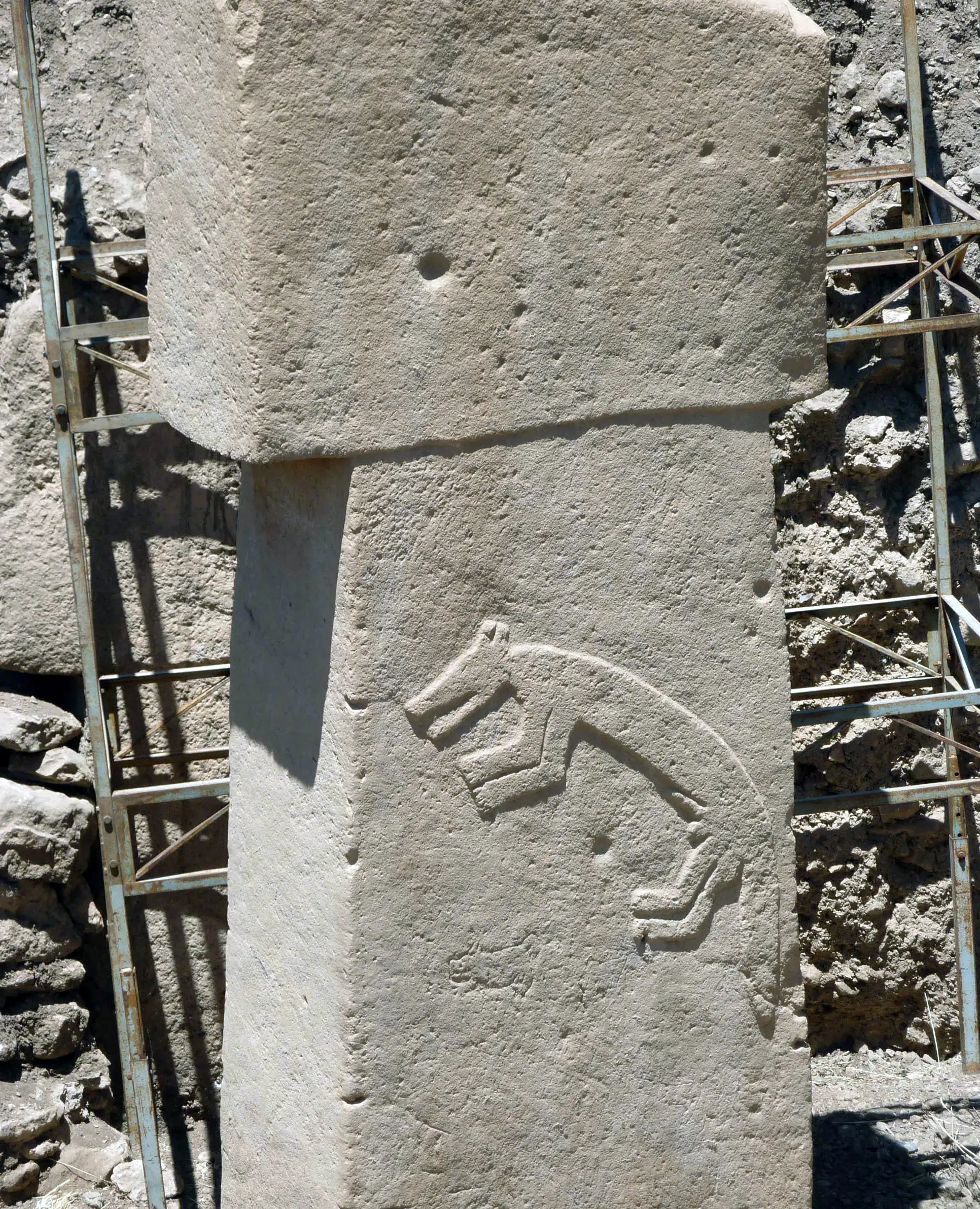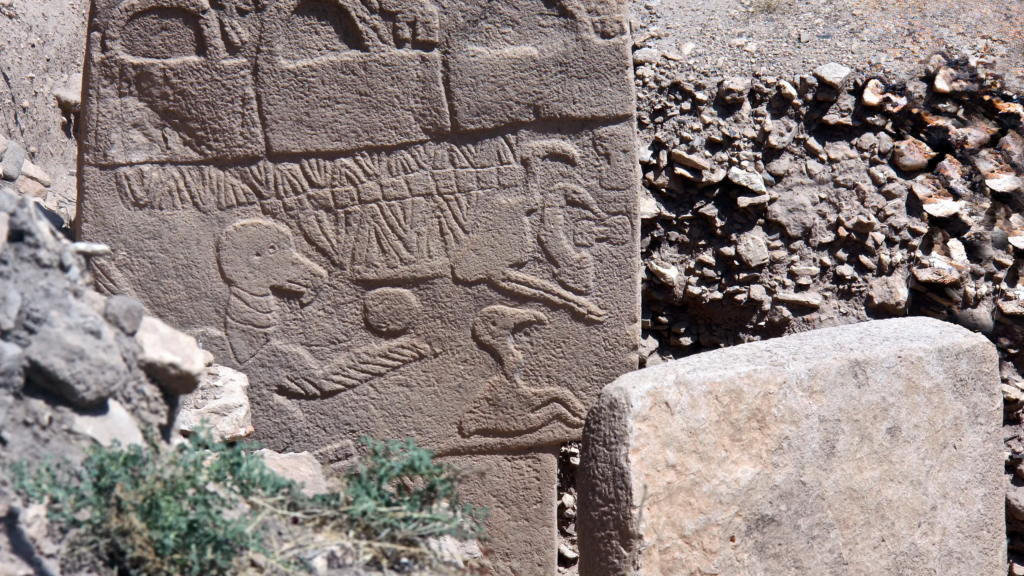Introduction
Göbekli Tepe, an archaeological marvel nestled in southeastern Turkey, stands as a testament to the ancient ingenuity of our ancestors. Discovered in the 1990s by German archaeologist Klaus Schmidt, this enigmatic site has reshaped our understanding of human history, challenging conventional timelines and theories. Dating back over 11,000 years, Göbekli Tepe predates the advent of agriculture and the rise of complex societies. In this essay, we will delve into the history of Göbekli Tepe, exploring its significance and pondering the possible uses that have captivated scholars and archaeologists alike.
The Discovery and Dating of Göbekli Tepe
Göbekli Tepe, translated as “Potbelly Hill” in Turkish, emerged from the shadows of obscurity when Klaus Schmidt initiated excavations in 1994. The site, located on the Anatolian Plateau, revealed a complex of massive stone pillars arranged in circular patterns. Each pillar, some reaching up to 16 feet in height and weighing several tons, was intricately carved with animal motifs and abstract symbols.
Radiocarbon dating of organic materials found at the site placed its origins in the Pre-Pottery Neolithic period, around 9600 BCE. This astonishing revelation placed Göbekli Tepe firmly in a time when humans were presumed to be hunter-gatherers, challenging prevailing notions about the prerequisites for monumental construction projects.
Göbekli Tepe’s Structural Complexity
The structural complexity of Göbekli Tepe is unparalleled for its time. The site comprises multiple circular enclosures, each consisting of a series of massive T-shaped pillars, arranged meticulously in concentric circles. The pillars are adorned with intricate carvings of animals such as foxes, birds, and scorpions, as well as abstract symbols and human-like figures. The level of craftsmanship exhibited in these carvings suggests a sophisticated understanding of stone tools and artistic expression.
One of the most perplexing aspects of Göbekli Tepe is the sheer effort required for its construction. The monumental stones used in the pillars were quarried from nearby outcrops, transported to the site, and then intricately carved with primitive tools. The question that has perplexed scholars is how a society of seemingly nomadic hunter-gatherers could organize and execute such a monumental construction project.
Possible Uses of Göbekli Tepe
The purpose of Göbekli Tepe remains a subject of spirited debate among archaeologists and historians. Several theories have been proposed, each attempting to unravel the mystery of why ancient people invested considerable time and effort in building this monumental site.
1. Religious or Ritualistic Center
One prevailing hypothesis posits that Göbekli Tepe served as a religious or ritualistic center. The elaborate carvings on the pillars, depicting various animals and symbolic motifs, suggest a connection to spiritual practices. The circular enclosures might have been used for communal gatherings, ceremonies, or rituals. Some scholars argue that Göbekli Tepe represents the birth of organized religion, challenging the notion that complex societies were necessary for the development of religious practices.
2. Astronomical Observatory
Another theory proposes that Göbekli Tepe functioned as an astronomical observatory. The alignment of some pillars with celestial events, such as solstices and equinoxes, has led scholars to speculate that the site was used for observing and tracking celestial phenomena. If true, this would imply a surprisingly advanced understanding of astronomy among ancient people, pushing back the timeline for such knowledge.
3. Social and Economic Hub
Some researchers suggest that Göbekli Tepe served as a social and economic hub. The site’s construction required a significant labor force, leading to the hypothesis that it brought together scattered groups of hunter-gatherers, fostering social cohesion and exchange of goods and ideas. The pillars may have served as markers for different groups or clans, contributing to a sense of community.
4. Ceremonial Burial Site
Another intriguing possibility is that Göbekli Tepe was a ceremonial burial site. The absence of residential structures and the discovery of numerous limestone pillars buried in the soil have led some researchers to propose that the site was associated with burial rituals. The pillars, adorned with carvings, might have symbolized a connection between the living and the deceased.
Conclusion
Göbekli Tepe, with its ancient mysteries and architectural sophistication, challenges our preconceptions about the capabilities of early human societies. Its discovery has prompted a re-evaluation of timelines and narratives surrounding the transition from hunter-gatherer lifestyles to settled agricultural communities. The purpose of Göbekli Tepe, whether religious, astronomical, social, or funerary, continues to elude a definitive explanation.
As ongoing excavations and research shed new light on this ancient site, Göbekli Tepe remains a captivating puzzle that beckons archaeologists and historians to unravel its secrets. Its significance goes beyond its physical structure; it prompts us to reconsider the cognitive and social capacities of our ancient ancestors, reminding us that the roots of human civilization may be more intricate and enigmatic than we once imagined.

Geolocation: 37.2173, 38.9129
Further Reading: Coming Soon
Photo Credits: Dosseman, Orthosved, Zhengan, Sue Fleckney, Yepyep
Introduction
Göbekli Tepe, an archaeological marvel nestled in southeastern Turkey, stands as a testament to the ancient ingenuity of our ancestors. Discovered in the 1990s by German archaeologist Klaus Schmidt, this enigmatic site has reshaped our understanding of human history, challenging conventional timelines and theories. Dating back over 11,000 years, Göbekli Tepe predates the advent of agriculture and the rise of complex societies. In this essay, we will delve into the history of Göbekli Tepe, exploring its significance and pondering the possible uses that have captivated scholars and archaeologists alike.
The Discovery and Dating of Göbekli Tepe
Göbekli Tepe, translated as “Potbelly Hill” in Turkish, emerged from the shadows of obscurity when Klaus Schmidt initiated excavations in 1994. The site, located on the Anatolian Plateau, revealed a complex of massive stone pillars arranged in circular patterns. Each pillar, some reaching up to 16 feet in height and weighing several tons, was intricately carved with animal motifs and abstract symbols.
Radiocarbon dating of organic materials found at the site placed its origins in the Pre-Pottery Neolithic period, around 9600 BCE. This astonishing revelation placed Göbekli Tepe firmly in a time when humans were presumed to be hunter-gatherers, challenging prevailing notions about the prerequisites for monumental construction projects.
Göbekli Tepe’s Structural Complexity
The structural complexity of Göbekli Tepe is unparalleled for its time. The site comprises multiple circular enclosures, each consisting of a series of massive T-shaped pillars, arranged meticulously in concentric circles. The pillars are adorned with intricate carvings of animals such as foxes, birds, and scorpions, as well as abstract symbols and human-like figures. The level of craftsmanship exhibited in these carvings suggests a sophisticated understanding of stone tools and artistic expression.
One of the most perplexing aspects of Göbekli Tepe is the sheer effort required for its construction. The monumental stones used in the pillars were quarried from nearby outcrops, transported to the site, and then intricately carved with primitive tools. The question that has perplexed scholars is how a society of seemingly nomadic hunter-gatherers could organize and execute such a monumental construction project.

Possible Uses of Göbekli Tepe
The purpose of Göbekli Tepe remains a subject of spirited debate among archaeologists and historians. Several theories have been proposed, each attempting to unravel the mystery of why ancient people invested considerable time and effort in building this monumental site.
1. Religious or Ritualistic Center
One prevailing hypothesis posits that Göbekli Tepe served as a religious or ritualistic center. The elaborate carvings on the pillars, depicting various animals and symbolic motifs, suggest a connection to spiritual practices. The circular enclosures might have been used for communal gatherings, ceremonies, or rituals. Some scholars argue that Göbekli Tepe represents the birth of organized religion, challenging the notion that complex societies were necessary for the development of religious practices.
2. Astronomical Observatory
Another theory proposes that Göbekli Tepe functioned as an astronomical observatory. The alignment of some pillars with celestial events, such as solstices and equinoxes, has led scholars to speculate that the site was used for observing and tracking celestial phenomena. If true, this would imply a surprisingly advanced understanding of astronomy among ancient people, pushing back the timeline for such knowledge.
3. Social and Economic Hub
Some researchers suggest that Göbekli Tepe served as a social and economic hub. The site’s construction required a significant labor force, leading to the hypothesis that it brought together scattered groups of hunter-gatherers, fostering social cohesion and exchange of goods and ideas. The pillars may have served as markers for different groups or clans, contributing to a sense of community.
4. Ceremonial Burial Site
Another intriguing possibility is that Göbekli Tepe was a ceremonial burial site. The absence of residential structures and the discovery of numerous limestone pillars buried in the soil have led some researchers to propose that the site was associated with burial rituals. The pillars, adorned with carvings, might have symbolized a connection between the living and the deceased.

Conclusion
Göbekli Tepe, with its ancient mysteries and architectural sophistication, challenges our preconceptions about the capabilities of early human societies. Its discovery has prompted a re-evaluation of timelines and narratives surrounding the transition from hunter-gatherer lifestyles to settled agricultural communities. The purpose of Göbekli Tepe, whether religious, astronomical, social, or funerary, continues to elude a definitive explanation.
As ongoing excavations and research shed new light on this ancient site, Göbekli Tepe remains a captivating puzzle that beckons archaeologists and historians to unravel its secrets. Its significance goes beyond its physical structure; it prompts us to reconsider the cognitive and social capacities of our ancient ancestors, reminding us that the roots of human civilization may be more intricate and enigmatic than we once imagined.

Geolocation: 37.2173, 38.9129
Further Reading: Coming Soon
Photo Credits: Dosseman, Orthosved, Zhengan, Sue Fleckney, Yepyep
